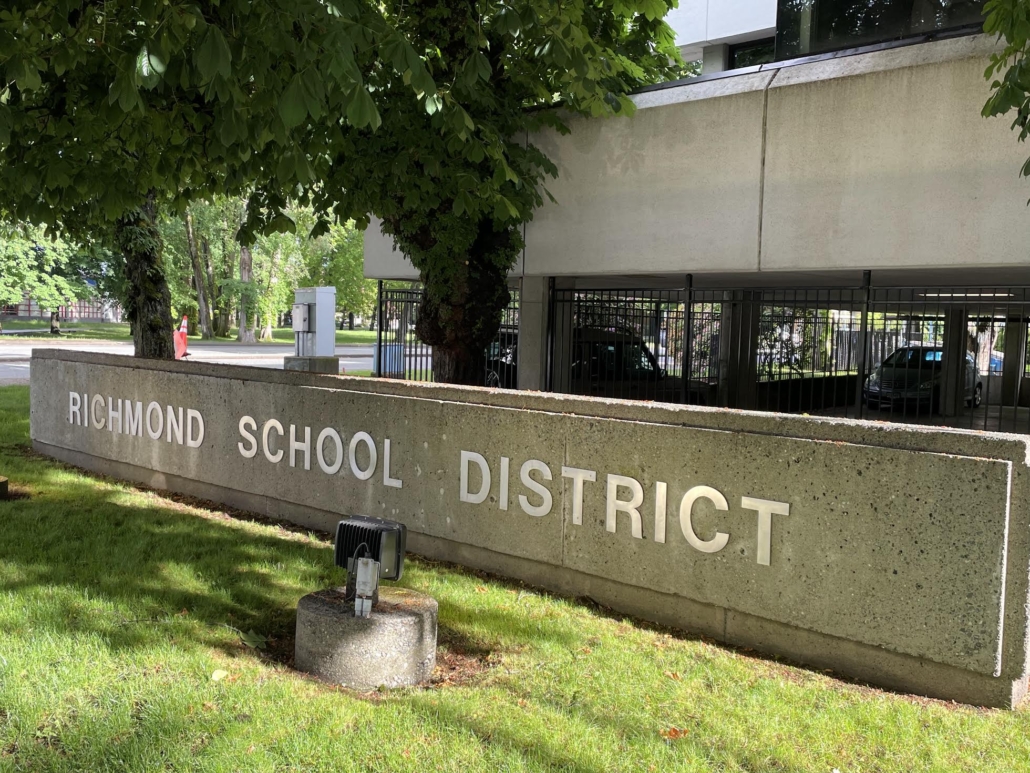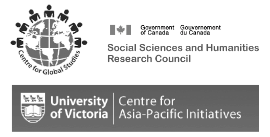Profile: Michael Perry-Whittingham and the Richmond School District
What separates Past Wrongs, Future Choices from other publicly funded humanities projects? One answer might be the international breadth of the story it seeks to tell, and the sheer degree of networked collaborations involved in doing so. Another would be the inderdependent relationship between academics, artists, and community figures. However, where the considerable academic aspect of the project is concerned, there is perhaps an even deeper holding-to-account: there are people intimately involved whose job it is to ensure the discoveries of PWFC scholars actually matter at the end of the day. While it is easy for academics and community researchers to lose themselves in the joys and horrors of the archive and of writing (this author very much included), knowledge, especially of a moral kind, which remains in the ivory tower is of little social value. For its potential to emerge, our partners in the public history and public education sectors must do the work on the ground. In the latter area, that is where teachers and school administrators like Michael Perry-Whittingham come in. As he puts it “That’s what separates professors from teachers. Teachers teach. Professors know a lot of stuff.”

Michael is not new to the problem of translating difficult histories into classroom learning, nor to the specifics of integrating the Japanese Canadian story into local education. A veteran social studies teacher and former vice principal with the Richmond School District in British Columbia, he has thirty-four years of experience under his belt, the past fifteen in administration. In the late 1990s and early 2000s, he worked with the Japanese Canadian Cultural Centre to produce a set of teaching resources covering internment and redress, as well as the infamous Vancouver Riots of 1907. Says Michael, “The Ministry of Education actually printed and published them, which is rare today and was rare then. Once you begin authoring and co-authoring curriculum you tend to get your name out.” As far as teaching goes, Michael’s passion is the art of ‘prep,’ or lesson planning: “I think I enjoy the challenge of trying to think of creative and interesting ways for kids to cover what it is we need to cover in the curriculum when much of it to them isn’t interesting, for all kinds of good reasons. That’s as true today as it was when I was in the classroom fifteen years ago.” These days, aside from PWFC, Michael is also helping the Japanese Canadian Legacies Society to build a digital ‘Education Pillar’ to train teachers, working on a Richmond School Board teaching package based on an upcoming PWFC book by Jordan Stanger-Ross and Eric Adams, and sitting on a Ministry of Education committee producing a rewrite of the provincial Social Studies 10 curriculum.

Despite his higher-level work Michael has never ceased to grapple with the specific problems of pedagogy. Indeed, he has always been driven to try to answer the ultimate question of his profession. As he puts it, “Why do we teach the things we do to kids, and why do they remember them?” This led him to pursue a master’s degree focused on historical consciousness, the study of historical memory within community and as taught. For him, much of this has to do with the vagaries of curriculum implementation. After all, while teachers have broad obligations to students, there is no “curriculum police” to go about telling teachers exactly how to implement and focus the assigned material. Michael says that he began to ponder early on, “why do I think some stories might be more important to tell the kids than others? For me it always had kind of a moral/ethical component.”
So, how does one teach something as morally complex as internment? First, Michael says, one must understand the goal. In this, the pedagogical buzzword of ten or more years ago, ‘backwards design,’ is still relevant: “At the end of it, when you talk to them, how will you know if they’ve learned the thing? Well, you can’t say that until you know what the thing is.” Further, teaching must navigate the balance of understanding historical action and ethical responsibility: “It is very hard for students and teachers to keep current value systems detached when assessing actions/actors in the past. While trying to draw lines connecting past to present it is important to help students recognize the differences […] While we might sit here and agree that internment was unjust and a wrong that never should have happened, that’s not how you teach it. You want the kids to arrive at that by the evidence you selected and the choices they get. […] “The tricky thing for a teacher is finding how to select that evidence. Not lead them down the garden path too much, but knowing you probably believe in your heart and in your own research that there is a better answer, if not a right answer. Because a right answer is always a dangerous thing in history, as we know.”
It’s also not merely a matter of placing a subject in the curriculum. Michael has always disliked the simplistic, if well-meaning sentiment that “we just don’t teach this stuff.” “That’s not true,” he says. “Teachers in this province have been teaching the 1907 riot, residential schools, internment, […] —All of it, in the thirty years I’ve been in the business and longer. Are they doing it consistently? Probably not. Are they doing it in every classroom? Definitely not. But whose fault is that? It’s the Ministry who set the rules and the guidelines, and if people say it’s important, why aren’t they making it mandatory?” As Michael is deeply aware, there is only so much time to cover curricular material, and teachers lacking specific knowledge about a topic will tend to emphasize things they already understand instead. With more well-integrated and modernized teacher training resources in local districts, he hopes that will change.
Of course, the drive by those of us focused on Nikkei histories to see them widely taught begs a complex question: With so many difficult events in the past history of BC, Canada, and the world, why is it specifically important to teach Nikkei persecution? And if it is, what parts are especially important? After all, as Michael emphasizes, there can be no “tiering and comparing” historical injustices. And yet, time and resources will always be limited. Nevertheless, he offers two arguments for internment history and its antecedents: “It’s not just Japanese Canadian history, it’s actually Canadian history. Sixty percent of the people who experienced this were Canadian, by the subjecthood rules at the time. Another fifteen percent were naturalized. So, they weren’t other people, if we want to use that word.” In other words, morally similar injustices, such as the Chinese head tax or the turning away of the Jewish refugee passengers of the MS St. Louis by antisemitic immigration chief Frederick Blair are important but lack quite the same power to gut myths of what it means to be Canadian. Says Michael, “[the internees] are Canadians. And we did a whole bunch of illegal things because of a bunch of racists. Never mind unjust things, they were actually illegal, not only unjust. In Canadian history, it has a weight to it that is actually fairly important. In the same way that I would say we haven’t done nearly enough with Indigenous issues.” Institutional injustice is also essential, Michael holds, even where the actions taken flouted contemporary law. For example, he suggests that the 1907 riots are essential to understanding internment in the 1940s. After all, future Prime Minister William Lyon Mackenzie King was the minister sent to investigate the incident at the time. “Mackenzie King becomes complicit in if not, one could argue, an architect of internment. […] I think there’s no doubt that his time in BC coloured his thinking about the Japanese and about Asians in general as he was going through these questions with his war cabinet and with his own ministers.” This is just one example of connections that students working under the new teaching package might be able to draw. It will not be the “right answer,” merely one of the better options.
With so much effort underway to reform and integrate understandings of the internment era in particular and racism in general under the aegis of PWFC and its global partners, one of the key problems will be finding the best way to tell transnational stories within national and regional education systems. Michael envisions “an inspiring, creative, and effective set of teacher lessons that help students understand the complexities of migration/immigration within the context of racist and systemic discriminatory policies that developed in Australia, Brazil, Canada and the United States.” This is to say nothing of the international threads between these stories and that of contemporary history. After all, stories which resonate within the hitherto brief lifetimes of students have a ‘sticking power.’ What’s more, says Michael, they are strictly relevant: “I see connections in the rise of anti-Asian hatred seen in US and Canada during COVID and the kinds of racist policies and attitudes of the 1940s. Under crisis it seems easy to explain away racist behaviours, but could these things still happen today? I believe they can and will if we do not draw the lines from past to present.”
This article was written by Aaron Stefik from an interview with Michael Perry-Whittingham

 Instagram
Instagram